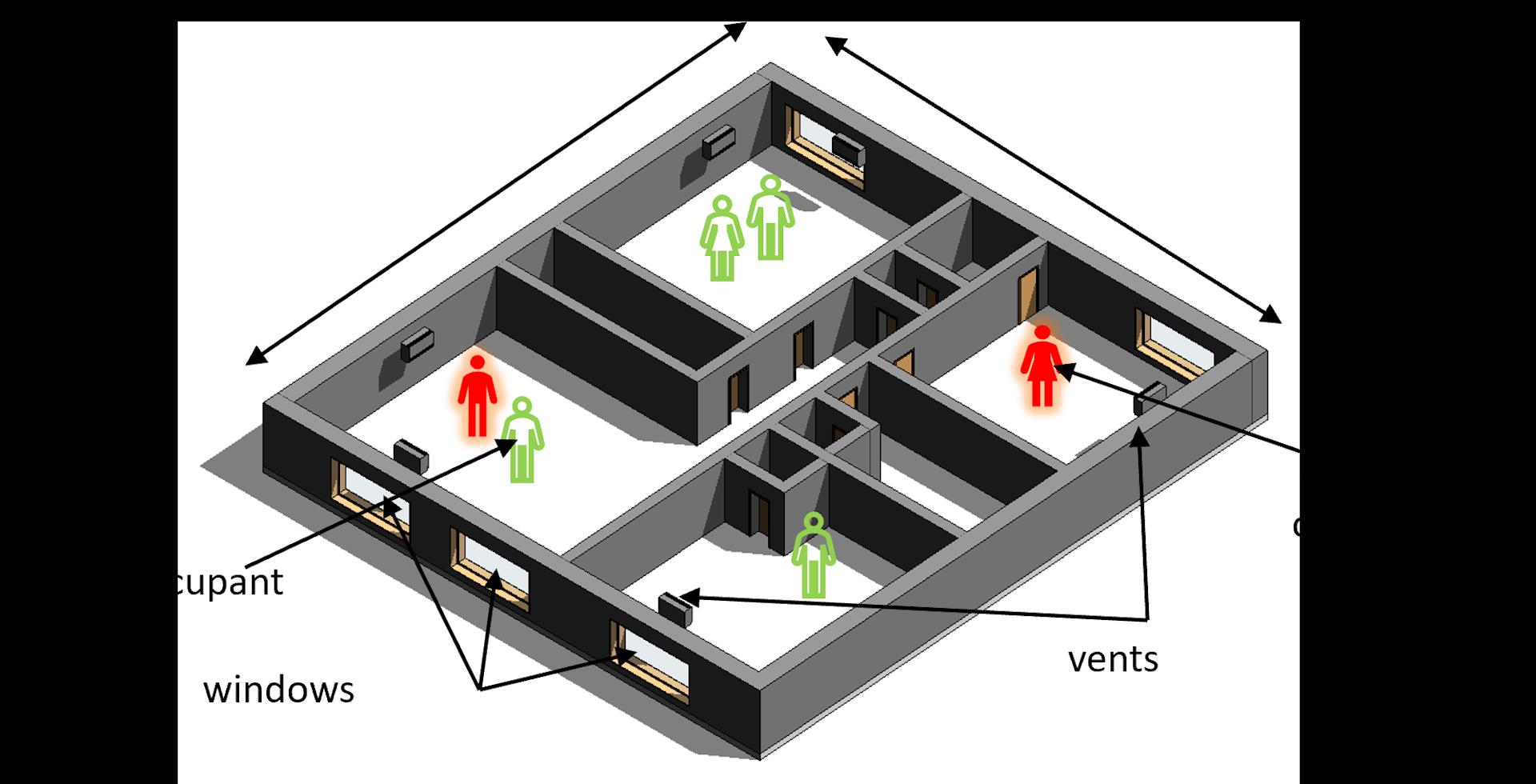Our AI Model Can Help Improve Indoor Ventilation During Wildfire Season
This summer, Canada experienced one of the worst wildfire seasons on record . Fires caused thousands to evacuate their homes and smoke periodically blanketed cities, causing outdoor air quality to deteriorate .
When we smell or see smoke, the first thing many of us might think to do is close our windows. However, wildfire smoke contains small fine particulate matter (PM2.5) that can pass through small openings or gaps.
In 2023, wildfires in Canada caused more greenhouse gas emissions than all other sources combined . That means designing safer indoor spaces is a public health imperative. But how can we develop indoor spaces that are well-ventilated and safe from the harmful effects of smoke?
Enhancing indoor air qualityAnswering this question would traditionally require going through a real-world process of trial and error in various spaces. Such a process is time-consuming and not always feasible. However, we recently developed a framework integrating modelling and simulation with deep learning techniques to help answer this question.
We know that enhancing indoor air quality, whether through improved ventilation, an optimal occupancy-to-area ratio or other room setting adjustments, can improve health and reduce the spread of infections .
The next step for researchers and designers is to determine the best indoor design features to reduce carbon dioxide concentration. Such features include rooms dimensions, the location of ventilation ports, ventilation levels, where windows are, maximum number of occupants, seating arrangements and so on.
How our model works
The model considers carbon dioxide sinks, sources and breathing occupants. Glaring red occupants have been exposed to high concentrations for longer, whereas hollow green occupants have a lower risk of getting sick. (Author provided)
Our framework tackles two pertinent problems: the lack of verified, accurate information and the inefficiency of producing and studying simulation results for many combinations of settings.
We use an advanced mathematical model and associated software tools that allow us to simulate varied enclosed spaces with different settings, and to collect simulation results.
The simulated data is then further used to form a data set to train an AI algorithm - in this case, using a deep neural network. Designers can use the trained network to predict unknown settings of the closed space when other settings are altered.
The framework allows designers to simulate how changes in room layout, such as the number vents and where they are placed, or the density of occupants, could impact well-being. For example, the framework can estimate how many people might get sick in a given space, helping architects and planners adjust configurations to minimize infection risk before construction begins.
We used several case studies from university laboratory settings to validate the framework. In one case study, our research team could create 600 simulation scenarios of different laboratory designs. The simulation results produced a rich dataset that would be nearly impossible to replicate in real life due to cost and logistical constraints.
The resulting dataset is used to train a machine learning algorithm to predict where and how many people might be exposed to high levels of carbon dioxide. With that information in hand, it's easier to make smart decisions about where to place ventilation ports or how many people should safely occupy a room under specific conditions.
Smoke from the Dryden Creek fire near Squamish, B.C., on June 10, 2025. THE CANADIAN PRESS/ Tijana Martin Future studies needed
Across Canada, researchers are leveraging machine learning to study indoor air quality in homes, schools and offices. Our findings suggest that this approach is well-suited for studying how carbon dioxide spreads in indoor environments.
However, broader study is still needed. To date, case studies have focused exclusively on a university environment. Yet our framework is designed to be scaleable and adaptable to wide range of indoor spaces. Future research should expand to schools, gymnasiums and residential buildings to strengthen the trust in the framework and refine its predictive power.
As climate change intensifies wildfire seasons, Canadians will spend more time indoors avoiding smoke. The good news is that we have the tools, data and the scientific insight to make indoor spaces healthier and safer for everyone.
We may not have the means to control the air outside, but we can design our spaces to control the quality of the air inside.

Legal Disclaimer:
MENAFN provides the
information “as is” without warranty of any kind. We do not accept
any responsibility or liability for the accuracy, content, images,
videos, licenses, completeness, legality, or reliability of the information
contained in this article. If you have any complaints or copyright
issues related to this article, kindly contact the provider above.
Most popular stories
Market Research

- Alt.Town Introduces $TOWN Token Utility Across Platform Services And Launches Valuefi Deposit Event
- BTCC Exchange Maintains 143% Total Reserve Ratio In September 2025 Demonstrating Continued Financial Strength
- Salvium Solves The Privacy Paradox: Salvium One Delivers Mica-Compliant Privacy That Exchanges Can List
- Zebu Live 2025 Welcomes Coinbase, Solana, And Other Leaders Together For UK's Biggest Web3 Summit
- Tapbit At TOKEN2049: Reshaping The Crypto Landscape Through Product Innovation
- Thrivestate Launches“Fly Before You Buy” Program, Enabling International Buyers To Explore Dubai Before Committing





















Comments
No comment